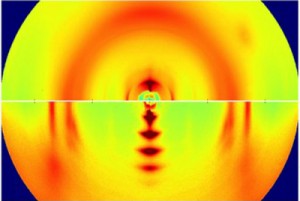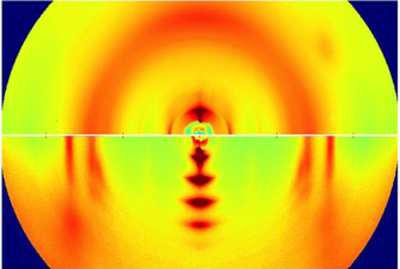A study done by Standford University found that disorder at the molecular level will actually enhance the performance of plastics polymers, which could speed up the development of low-cost, commercially available plastic solar cells.
“People used to think that if you made the polymers more like silicon they would perform better,” said study Co-Author Alberto Salleo, an Associate Professor of Materials Science and Engineering at Stanford. “But we found that polymers don’t naturally form nice, well-ordered crystals. They form small, disordered ones, and that’s perfectly fine.”

In the study, the Stanford team focused on a class of organic materials known as conjugated or semiconducting polymers – chains of carbon atoms that have the properties of plastic, and the ability to absorb sunlight and conduct electricity.
Discovered nearly 40 years ago, semiconducting polymers have long been considered ideal candidates for ultra-thin solar cells, light-emitting diodes and transistors because they are lightweight and can be processed at room temperature with ink-jet printers and other inexpensive techniques. However, a major flaw is limiting their development: poor electron mobility.
To compete with conventional cells made of silicon, research groups have tried creating new plastic materials that enhance the flow of electricity through the solar cell by redesigning pliant polymers of plastic into orderly, silicon-like crystals, but the flow of electricity did not improve.
Mr. Salleo and his team then found that several labs created polymers that looked disordered had in fact very high charge mobility, working better than the more structured crystalline ones.
To observe the disordered materials at the microscopic level, the Stanford team took samples to the SLAC National Accelerator Laboratory for X-ray analysis. The X-rays revealed a molecular structure resembling a fingerprint gone awry. Some polymers looked like amorphous strands of spaghetti, while others formed tiny crystals just a few molecules long.
By analyzing light emissions from electricity flowing through the samples, the Stanford team determined that numerous small crystals were scattered throughout the material and connected by long polymer chains, like beads in a necklace. The small size of the crystals was a crucial factor in improving overall performance, according to Mr. Salleo.
“Being small enables a charged electron to go through one crystal and rapidly move on to the next one,” he said. “The long polymer chain then carries the electron quickly through the material. That explains why they have much higher charge mobility than larger, unconnected crystals.”
Instead of trying to mimic the rigid structure of silicon, Mr. Salleo and his team recommend that scientists learn to cope with the inherently disordered nature of plastics as much as possible.
“Our conclusion is that you don’t need to make something so rigid that it forms large crystals,” Mr. Salleo said. “You need to design something with small, disordered crystals packed close together and connected by polymer chains. Electrons will move through the crystals like on a superhighway, ignoring the rest of the plastic material, which is amorphous and poorly conducting.”
Their findings are published in the August 4 online edition of the journal Nature Materials.
Source: www.adsalecprj.com/Publicity/MarketNews/lang-eng/article-67007037/Article.aspx








